Anthony Gallo Acoustics has been developing and improving their spherical loudspeakers for more than 20 years. The new $1,998 per pair Reference Strada is the next generation, following the company’s very well received Reference 3.1 . The CDT3 tweeter is the exact same unit which is used in the new $5,995 Reference 3.5, and the dual 5” drivers with neodymium magnets are also found in the 3.5. You might consider the Reference Strada as a Reference 3.5 without the 10 inch woofer.
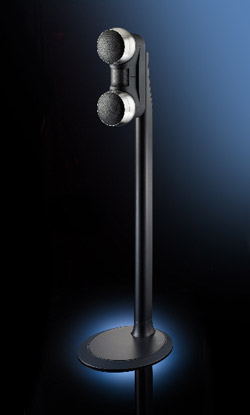
There are significant advantages to a spherical enclosure. The round shape is one of the strongest in nature, especially when used as a pressure vessel. As the cone of a speaker moves in and out, the air inside the enclosure is compressed and rarified which puts a lot of stress on the enclosure. This pressure could be measure in PSI. Almost every other manufacturer attempts to manage these pressure changes with heavy boxes made with thick, reinforced walls to keep the enclosure from vibrating and adding to the sound from the driver. However, a round enclosure is the perfect shape for this purpose because the material of the sphere would actually have to stretch to vibrate. This is not likely to happen with a steel enclosure. Have you ever bent a paper clip or coat hanger to break it? If so, do you remember how hot it became? The same would happen with a spherical metal speaker enclosure. The lack of heating during loud music demonstrates that this is the ideal shape for a speaker enclosure, and a perfect example of form following function.
The same physics apply to the $985 TR-3 subwoofer. Even at loud volumes, there is very little vibration of the cylindrical enclosure. An important benefit of using the best shape for these enclosures is light weight. The Reference Stradas weigh only 11.4 pounds each, and a TR-3 subwoofer weighs a back-friendly 36 pounds. The matching floor stands ($450 per pair) for the Stradas weigh an estimated 8 pounds each. It is easy to pick up a stand mounted Reference Strada – with one hand. Just cup the lower sphere as you would a … softball, and lift.
Other components on hand during the audition period included a SOTA Cosmos IV Vacuum turntable with Triplanar VII u2 tonearm, VPI Classic turntable; Mark Levinson No. 326S with built-in phono stage, Krell KCT, ARC LS26, Bel Canto Pre3 and McIntosh C220 preamplifiers; Bob’s Devices CineMag Moving Coil Step Up Transformer; Bryston 4B SST2 and 7B SST2, and Parasound JC-1 power amplifiers; Wiss DAC2 and Prism Orpheus Digital Interface Firewire digital processors, both used with a custom Windows 7 music server. Loudspeakers included YG Acoustics Kipod Main Modules and Dali Euphonia RS3s. A pair of Velodyne Optimum-12 subwoofers served as a reference, with a clear memory of recently departed JL Audio fathom f112 subwoofers. Power conditioning includes an Audience aR2p-TO and PS Audio AV-5000; with cabling by Audience, PS Audio and Mogami. The home theater system is anchored by a Marantz SR7002 A/V receiver. The front main speakers are Dali Mentor 5’s with a Mentor Vokal center channel speaker, wired with Analysis Plus Oval 12. There are two Perfect Subwoofers and a pair of B&W Leisure 1 speakers support the two rear channels.
Gallo Acoustics kindly supplied a pair of Reference Stradas and a single TR-3 subwoofer for this review. I installed these in the audio-only system above for most of the audition. They also sent a center channel Reference Strada which I installed in the HT system later. More on the home theater application of these speakers below. For music only, the Strada system was immediately satisfying. The break in period was relatively quick and painless, taking about 50 hours until the speakers were “ripe”, with final resolution attained after about 100 hours. The TR-3 subwoofer required about 300 hours to really loosen up and attain its final level of resolution and impact. I have a bias for using subs in pairs, and while one TR-3 was entirely competent at filling my 1500 cubic foot listening room with bass, I missed the more even bass response realized with two subs. This may well be an artifact of my room, since a subwoofer and the listening room together comprise the “bass system”. Having two subs also splits the chores between two drivers, theoretically reducing distortion while increasing speed and resolution since each driver does half the work. Gallo has heard that other customers enjoy using their subs in pairs, and early in the audition sent along a second TR-3 for this review.
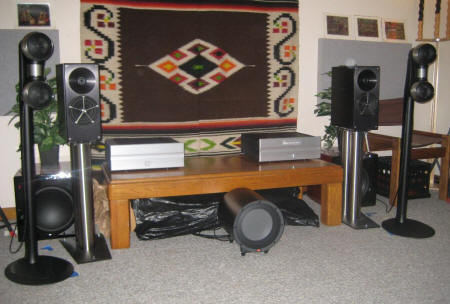
The Cylindrical Diaphragm Transducer CDT3 tweeter is unlike any other in current production. The basic technology is piezoelectric. It offers a full 180° horizontal dispersion which almost completely eliminates the “sweet spot” or ideal listening position. This is absolutely wonderful for a home theater system where you, your family, and guests might be seated in very different positions around the room. Everyone can now enjoy even frequency response up to the highest treble. This suggests one of the Reference Strada’s real strengths: a sound stage that has the width, depth and easily noticeable locations of all musicians – and trains, planes, explosions, etc. – as the best speakers available today. Each musician occupies a definite 3-D position in the virtual space without any sense of being a flat, “cardboard cutout” of a real person. There is a “reach out and touch” solidity to individual performers and a very realistic continuousness throughout the sound space that envelopes the listener. And this is in stereo! Using all three Reference Stradas for the front channels of the home theater system produces a wonderful sense of immersion in the movie and a compelling feeling of participation and involvement.
The Reference Stradas, without the TR-3 subwoofer, have excellent bass resolution and believability. This very musical character extends evenly across the midrange up to the transition to the CDT3 tweeter. As in the Reference 3.1 and 3.5 models, there is no crossover between the midrange drivers and the tweeter: the transition is seamless. This is a real, audible advantage of this design. All that is missing is some low bass-centered thunder that the TR-3 subwoofer easily provides. One evening, I had been listening to the Stradas for about a half an hour and casually thought it would be nice to have a bit more bass. When I walked over to turn up the volume on the sub, I saw that the power cord was unplugged! I would not have thought that a spec of -3dB at 45 Hz would be this satisfying, but the Stradas changed my mind. Being sealed, their roll off in the bass is much more gradual than from a ported speaker and this might make a subwoofer optional for many listeners. Sealed speakers are often spec’d at their -10 dB point in the bass, while ported speakers roll off quickly after their -3 dB point. To keep the sound quality consistent with the main amplifier, only the high (speaker) level connections were used from the main amplifiers to the subwoofers.
On Steely Dan’s “Babylon Sisters” from the Gaucho LP, the Stradas dig way deeply into the sound of the brass. Together with the outstanding soundstaging, the impression of real instruments playing in my room is compelling. The $17,000 Kipods pull more metallic sheen from the brass, and are cleaner and smoother in the upper midrange and treble, but the Strada’s sound is quite true to the recording, maybe moving the listener back a section in the concert hall. On Sting’s “Rock Steady” on Nothing Like the Sun, the shenanigans in the background are clearly heard, and also localized appropriately near the rear of the stage. In fact, these very quiet sounds are just a little more easily discerned though the Stradas than when listening to the 8 times more expensive Kipods.
The treble performance of the CDT3 tweeter is very fine. The cymbal work in “Lady J” on Pat Coil’s Just Ahead LP (Sheffield TLP34) is very believable, with each tap of the drumstick rendered crisply and with the clear sounds of wood and metal in that momentary impulse. The exceptional horizontal dispersion has a trade-off in vertical dispersion and there is a noticeable drop off of upper treble energy when I stood up. This was not as noticeable in my larger home theater room, aka “living room”, in which we sit further away from the speakers.
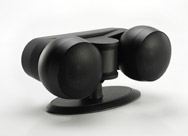
Compared to the Dali Mentor 5, which retail for $3,400 per pair, the Stradas offer a much wider listening window with not quite the low bass performance. However, since these were used for HT and subs were present, the bass performance below 80 Hz was largely irrelevant. The Stradas are slightly more dynamic in the midrange and a bit cooler sounding, which is another way of saying that the Dalis are a little warmer or fuller in the mids. The Mentor’s ribbon tweeter offers superior upper treble resolution, while the Gallo’s lack of both the midrange-to-tweeter crossover and tweeter-to-super tweeter crossover is a decided advantage of the Stradas. This is because there is no good crossover, only ones that are less harmful.
Let me share more examples of musical treats. “Master and Slave” from the wild Zoot Suit Riot CD by Cherry Poppin’ Daddies, is a very good demonstration of the Reference Stradas’ articulation, ability to keep pace with up-tempo music, and to handle a too-hot sax without turning it into a headache-inducing nightmare. This cut also nicely highlights the speakers’ very nimble mid and upper bass, and is a lot of fun, especially played LOUD.
I am not a mega-watt head banger, however. Although I enjoy volume levels that evenly pressurize the listening room, in the interest of maintaining my hearing acuity long into my old(er) age, I am becoming a little more conservative with the volume control. The Stradas accommodate different loudness levels equitably. This is usually a result of a very even frequency response that offers no forwardness or highlighting of any small or large frequency range.
The guitar work on the Doobie Brothers “Larry the Logger 2-Step” on the RCA LP of Living On The Fault Line was simply sensational and had me totally immersed in the performance. Why? I don’t really know the reason for my reaction, just that I loved it! Sometimes you just have to stop analyzing and take an experience for what it provides at the moment.
It is important to note that all of my listening impressions, written down over the months of the audition, deal with how the music sounds, how the music was convincing (mostly) or not (very rarely), and how much enjoyment I was having listening to these speakers. What is unusually absent in these notes is anything to do with the hardware which was about as set ‘n forget, plug ‘n play, as any component I have had in my listening room.
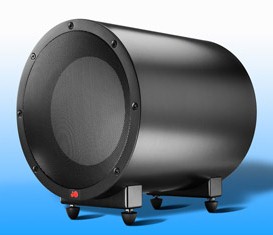
The TR-3 subwoofer is a surprise. For about a grand each, I expected a subwoofer that offers good performance, especially with its 10 inch ceramic-enhanced aluminum cone driver and 300 Watt built-in amplifier. This expectation was partly due to the fact that Anthony Gallo is obviously a smart guy, a good speaker designer, and a good listener. He undoubtedly learned something with the previous TR-1 and TR-2 models. “Learned something” doesn’t begin to explain the truly outstanding musical performance of these subwoofers. Their speed and resolution, especially when used as a stereo pair, is exemplary. They combine the impact and fine detail of the $2,800 (each) JL Audio fathom f112 with the natural warmth and resonance of the $1,800 Velodyne Optimum-12.
Where the JL Audio and Velodyne subs each lacked some of the other’s strengths, the Gallo TR-3 puts it all together in an entirely complete package, one that is easy to install and adjust even without automatic room compensation, digital readouts, or remote controls. The sub is really excellent with big drums, offering a very realistic sound of the drum head being struck and then vibrating a millisecond later. It quickly achieved a seamless blend with the very articulate upper bass of the YG Acoustics Kipod Main Modules allowing electric or acoustic basses to run up and down their scales without being able to discern where the main speakers or subs take over. In fact, after break in, it only took a couple of comparison swaps with the Velodynes to convince me that the TR-3 is “the” subwoofer to match the stunning resolution of the Kipods.
Auditioned in the HT system in a much larger room, two TR-3s had no trouble keeping up with the very dynamic soundtrack of Leonardo DiCaprio’s Inception. The TR-3 offers useful output down to about 17Hz without bass boost in my listening room. The rear mounted amplifier can become warm and needs some ventilation. Where I struggled to move the heavy JL Audio fathoms, I can easily move or carry the Gallo subs – two at the same time, one under each arm. I wanted to take a picture of me carrying two subs at the same time, but ran out of arms. The small size of the TR-3s allow them to be tucked in nice and close to the main speakers, further reducing the small phase difference – less than 1 degree @ 1 meter – if they were positioned closer to the rear wall. I bought both TR-3s, and am thinking about adding a third one, for a center sub in mono.
The Reference Strada with the center channel speaker and two TR-3 subwoofers offer an outstanding movie watching – and listening – experience that fills the room with an intensely believable recreation of the performance environment. For music, listening to the Reference Strada and a single TR-3 subwoofer, with a system price of about $3450, puts one squarely in the Zone of Diminishing Returns. This trio offers such a strong foundation in high end sound quality that further improvements are very costly.
Overall Ratings:
Reference Strada: 9 LPs
TR-3 Subwoofers: 10 LPs
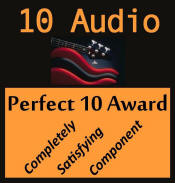
Link to Manufacturer’s Web site: Anthony Gallo Acoustics
